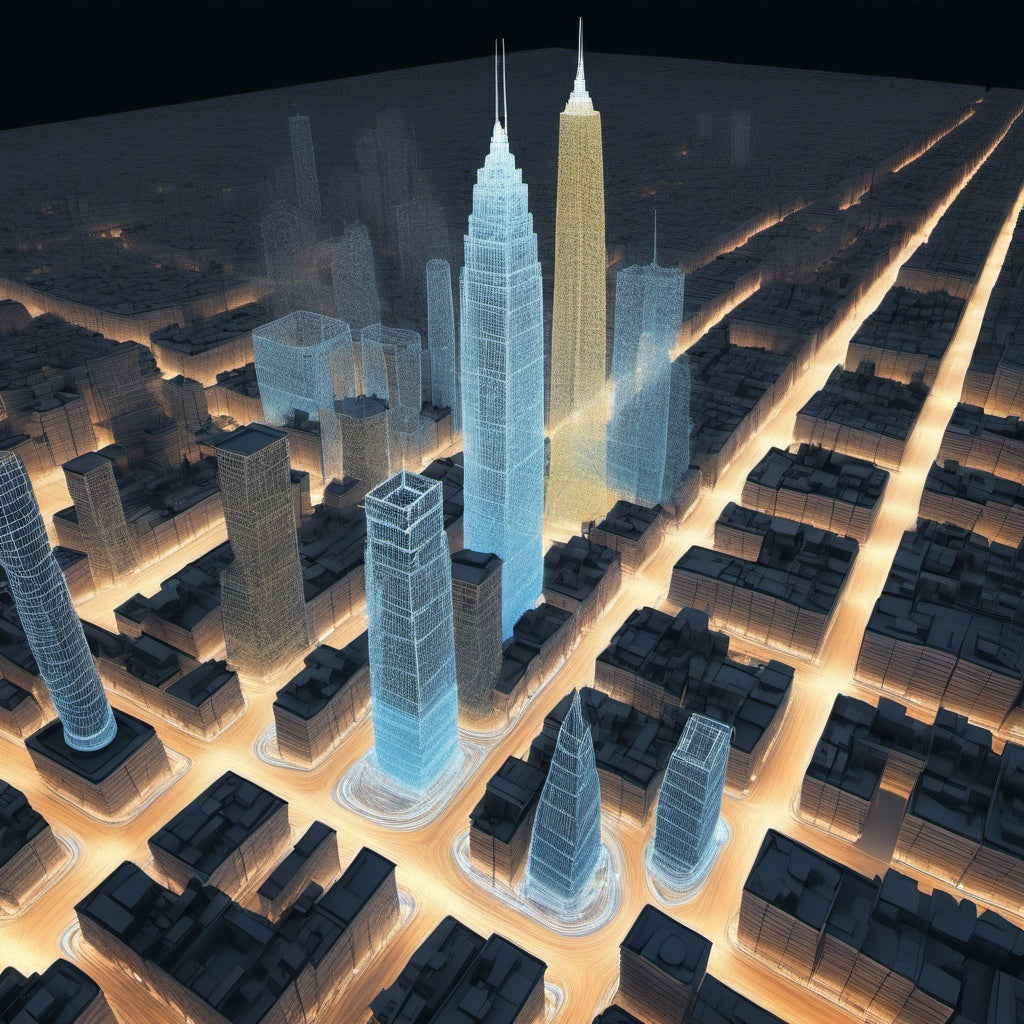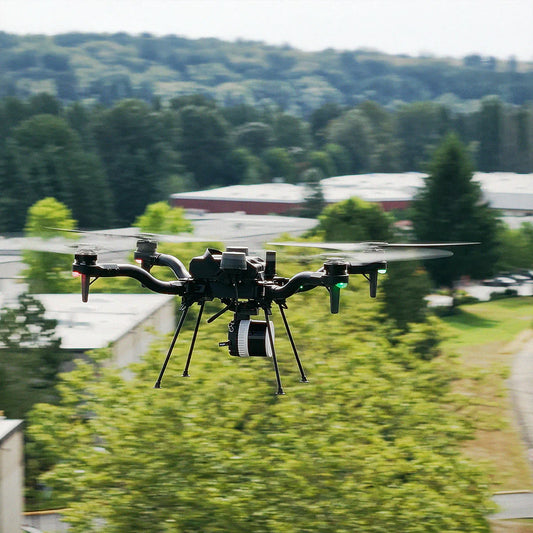
How Will AI Enhance LiDAR Surveying and Mapping?
Ana Rouxinol
As technology advances, combining artificial intelligence (AI) and LiDAR opens new possibilities in surveying and mapping. LiDAR, known for its accuracy and efficiency in capturing spatial data, has become indispensable in industries like construction, urban planning, forestry, and disaster management. With AI enhancing LiDAR's capabilities, we see innovations that make data analysis faster, more insightful, and more actionable. This post will explore how AI and LiDAR transform surveying and mapping, providing powerful tools to navigate and understand complex environments.
What is AI and How Does It Work?
AI, or Artificial Intelligence, is the ability of machines to perform tasks that typically require human intelligence. By learning from data, recognizing patterns, and making decisions, AI can automate complex processes and provide manual insights that would be difficult or time-consuming for humans to achieve.
AI operates through various methods, including machine learning, where algorithms learn from large datasets, and deep learning, which mimics the human brain's neural networks. In the context of LiDAR, AI can analyze vast amounts of spatial data, classify objects, and detect changes over time, all in a fraction of the time it would take a human analyst.
What Can AI Do for LiDAR?
AI's role in LiDAR extends beyond data collection. Here are some ways AI can enhance LiDAR systems:
- Object Classification: One of the most significant applications of AI in LiDAR is object classification. By recognizing and categorizing elements within the LiDAR data, AI can help identify features like buildings, trees, roads, and vehicles. For example, in a post-disaster scenario, AI can swiftly classify objects to determine if it's safe to navigate a particular area or if there are obstacles, such as fallen trees. This rapid classification provides real-time insights that can aid in decision-making during emergencies.
- Change Detection: AI can track and analyze changes over time for applications like urban planning and smart cities. By comparing new LiDAR data with historical records, AI can detect new developments, structural changes, or even subtle shifts in the environment. This capability is crucial for infrastructure monitoring and helps city planners make informed decisions based on evolving landscapes.
- Data Colorization: AI can assist in colorizing LiDAR data by assigning realistic colors to objects based on their classification. For instance, trees can be colorized in shades of green, buildings in gray, and roads in black, creating a more intuitive representation of the data. This enhances visualization and aids in analysis, as users can quickly distinguish between different types of objects.
- Anomaly Detection: AI algorithms can identify anomalies within LiDAR data, flagging unusual patterns or inconsistencies. This is particularly useful in surveying, where detecting cracks in structures or irregularities in topography could indicate potential hazards.
- Predictive Analysis: With machine learning, AI can predict patterns and trends based on historical LiDAR data. This predictive capability can benefit sectors like forestry, where AI could foresee growth patterns or potential risk zones for fires, helping officials take preventive action.
Examples of AI Helping LiDAR
Disaster Response
In a natural disaster scenario, speed is critical. AI-enhanced LiDAR can quickly analyze affected areas, classify obstacles, and highlight safe passages. For example, following a storm, AI could rapidly identify fallen trees or blocked roads, guiding rescue teams to the safest routes. In emergencies, these AI-driven insights are invaluable for first responders, allowing them to act faster and more effectively.
Smart City Development
AI and LiDAR will become essential tools in developing smart cities. For instance, in regular infrastructure inspections, AI can analyze LiDAR data to detect changes in buildings, roads, and other structures. This technology will help cities keep their infrastructure safe and updated without time-consuming manual inspections. By tracking changes and forecasting potential risks, AI will enable cities to adapt proactively to natural and human-induced changes.
Forestry and Environmental Monitoring
In forestry, AI-enhanced LiDAR can identify different vegetation types and monitor changes over time. For example, it can help detect forest health issues by identifying dead or diseased trees and providing early warning for potential fire risks. This proactive approach will help in conservation efforts and in managing forests sustainably.
Limitations to Consider: AI Can't Improve Raw Data Quality
While AI can significantly enhance the analysis of LiDAR data, it's essential to understand that it cannot improve the data quality itself. AI can analyze and classify data efficiently, but AI cannot fix these underlying issues if the raw LiDAR data is flawed due to poor resolution or noise. Therefore, high-quality LiDAR data is still essential for optimal results, and AI should be viewed as an enhancer rather than a substitute for accurate data collection.
Integrating AI with LiDAR technology will transform the field of surveying and mapping. AI will bring unparalleled efficiency to LiDAR data analysis, from rapid classification to disaster scenarios to long-term change detection in urban settings. Although it doesn't improve raw data quality, AI will significantly enhance what we can learn from that data, making it an indispensable tool in various industries.
We can expect even more sophisticated applications as AI evolves, making LiDAR surveys faster, smarter, and more actionable. If you're in industries like construction, urban planning, forestry, or emergency response, exploring AI-driven LiDAR solutions could provide a competitive edge, enabling you to harness the power of data like never before.




